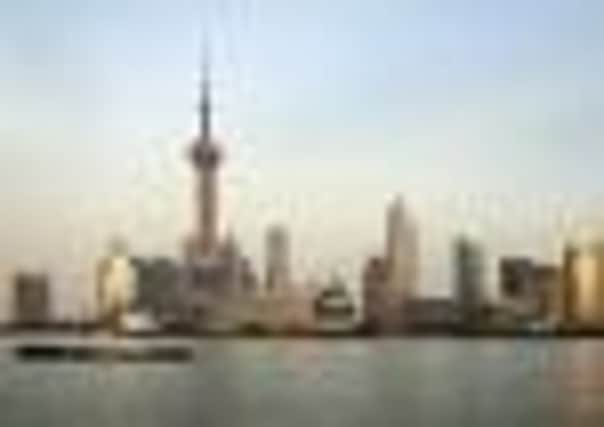New face of an old country


Chizzzzzzzzzz! – laughs the crowd of Chinese tourists as they thrust me – a blonde, blue-eyed Westerner – into the middle of their group photo. All of them are sporting peace signs and grins. A few of them are wearing panda hats. I don’t know these people, but in 35 minutes at the Great Wall of China I have been asked to pose in 10 different snapshots with 10 different strangers.
It is March. The sun is out and the sky a vibrant blue, but the air is thin, windy and crisp. Young Chinese women are huffing up the wall’s steep inclines in stilettos and tight jeans, their boyfriends, in roughed-up leather jackets and slicked-back hair, are lugging laptops. Here, on a 2,500-year-old wall that once protected the Middle Kingdom and its lucrative Silk Road from ancient marauders, a laptop seems, well, a bit weird.
Advertisement
Hide AdAdvertisement
Hide AdBut in a nation developing as quickly as China, there is the past, and then there is the future. There is no middle. After flying over the vast, snowy steppes of Mongolia, I had watched Beijing’s new ring roads and dominoes of high-rise apartment blocks emerge dramatically from the clouds. Motorways snake across the dusty landscape, choked with cars, motorcycles, buses and 14-wheelers, their thick smog mingling with the sandy grit of the nearby Gobi Desert.


I’m not surprised by the traffic, Beijing sees 2,000 new cars on its roads every day. But when my 32-year-old guide Feng adds, nonchalantly, that traffic jams around the capital have been known to extend for 100 miles at a time, I snuggle a little deeper into my seat. Amid all of this scaffolding stands the vermilion and saffron-coloured Forbidden City itself, a beautifully manicured paean to China’s imperial past. Here, gold-leaf roofs still glitter in the afternoon light and a quiet calm floats among its cherry-blossomed gardens.
At times, Beijing’s development can be a little disarming. But its “anything goes” attitude can also make for some fabulous architecture – like the 2008 Olympic Stadium, also known as the Bird’s Nest, or the about-to-topple-at-any-second, steel-and-glass China Central Television Tower.
When we move from the capital to Luoyang, a major tourist destination for its 1,500-year-old Buddhist statues, I find that here, too, China’s past is still tangible – yet only just. Religious relics in this atheist country are hard to come by, but in limestone grottoes along a jade-coloured river, some 100,000 different Buddhas have been meticulously carved into stone.
Advertisement
Hide AdAdvertisement
Hide AdOver breakfast, I am intrigued by the views from my high-rise hotel’s 360-degree rotating restaurant. I watch elderly locals take part in the practices of tai-chi and sword-fighting. They are slow and fastidious in their movements, and there isn’t one under 70. Most of the young people I see are in transit. When we set off on a high-speed train for Xi’an, home of the Terracotta Soldiers, young migrants spend the journey hawking us items like green tea, USB pens and fishing rods.
Young people are leaving China’s villages for the cities in droves, and many of them are taking whatever work they can get. The change is in the air all across northern China’s barren landscape. As we jet across the dust at 330kph, we pass power plant after power plant, their thick white plumes cloudy in the hazy sky. Here and there are blocks of small farms, manned by middle-aged farmers in leather jackets with cigarettes at their lips, then another power plant comes into view. Even in Xi’an, nestled into the Qinling Mountains and known for its superb feng shui, the acrid smell of industry is overpowering. Everywhere, new buildings are going up. On one block, I count 72 new apartment buildings – mini empires in this “modest” city of eight million people.
Xi’an is famous for its 7,000 ancient life-sized terracotta soldiers, among them archers, guardsmen and foot soldiers. All of them were modelled on Emperor Qin’s real army – they are a stunning sight.
Our local Xi’an guide, Durbin – one of the few outspoken Chinese I will meet – is happy to spend the time discussing with me the future of his country.
Advertisement
Hide AdAdvertisement
Hide Ad“We are a wealthier nation than ever before, it’s true,” he says. “But the state is rich, not its people. The question is, how do we make all the people as rich as the country is now?” I mull over his words at dinner, a traditional hotpot of pork, bok choy, noodles, crabmeat and hard-boiled eggs, where I see China’s new middle and upper classes come out to play.
When I find myself in Shanghai a day later, with just 24 hours to spare before I fly home, my head is spinning. From the futuristic dome of the pink-and-purple Pearl Tower, I watch the sun set across the city’s Art Deco riverfront, and the flickering neon of Shanghai’s skyline light up at dusk. I am impressed: China’s past and future seem so beautifully melded together here. Suddenly, I feel a tap on my shoulder. “Photo with me?” the girl asks, smiling shyly. Then, together, we yell in unison: “Cheese!”
GETTING THERE
* Kate Hodal was a guest of On The Go’s 13-day Fine China trip, which includes Beijing, Luoyang, Xi’an, Guilin, Yangshuo and Shanghai and is available to October.
* Packages are from £1,149 for 2012, including B&B accommodation, some meals, transfers, local tour guides, and events like City Wall bike ride in Xi’an, Chinese acrobatic performance, rickshaw ride in Beijing. Flights are extra. Tour starts in Beijing and finishes in either Shanghai or Hong Kong.
* On The Go 0207 371 1113 and www.onthegotours.com